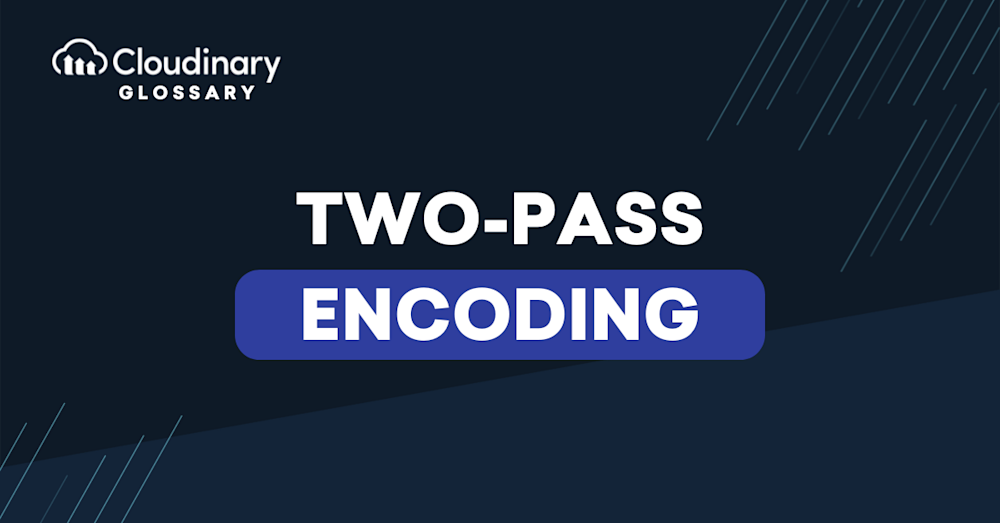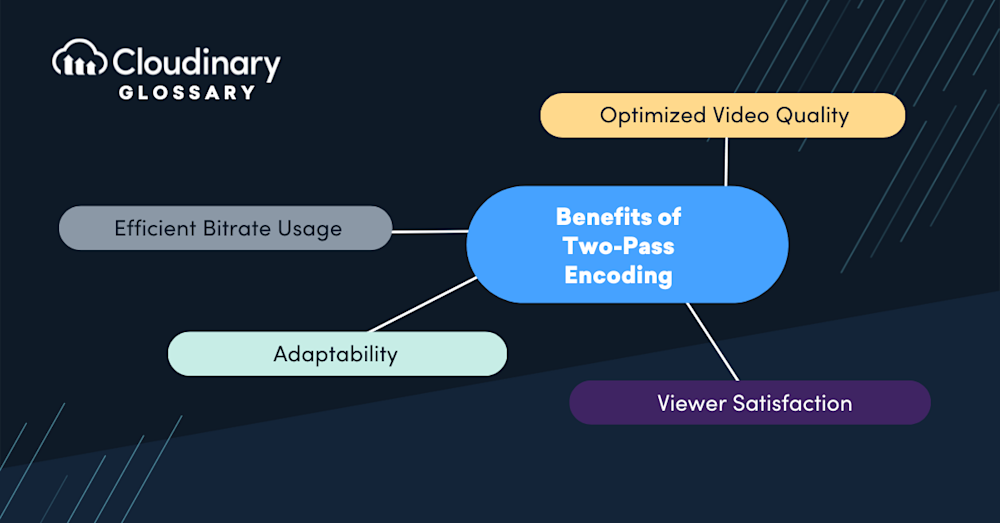What Is Two-Pass Encoding?
Two-pass encoding is a video encoding technique that involves encoding a video in multiple passes. The process entails analyzing the video’s first pass to determine its characteristics, followed by a second pass in which encoding is performed. During the first pass, the encoder analyzes the video and records information about the amount of data needed to encode each frame. This data is then used during the second pass to optimize the encoding process, i.e., to determine the appropriate bitrate for each frame while minimizing quality loss.
Why Is Two-Pass Encoding Important?
Two-pass encoding is essential for optimizing the size and quality of video files. Video encoding, whether done by a computer or manually, often involves using a constant bitrate throughout the encoding process. However, this can result in poor quality output due to higher compression for high complexity areas and, conversely, less compression for lower complexity areas. The Two-Pass Encoding technique helps apply the best possible bitrate to each frame, optimizing compression efficiency and reducing file size while preserving video quality.
How Does Two-Pass Encoding Work?
Two-pass encoding is a method of video encoding that involves analyzing and compressing video data in two separate stages, or “passes,” to balance video quality and file size. In the first pass, the encoder scans through the entire video, gathering important statistics and data about its complexity and content. This pass doesn’t produce the final output but creates a log file that captures characteristics such as scene changes, motion, and color information.
During the second pass, this pre-gathered data is used to allocate bits to preserve quality where it matters most while conserving data space in less complex scenes. This allows for better distribution of the available bitrate over the entire video, ensuring that complex scenes get the attention they need. In contrast, simpler ones don’t use up more data than necessary.
Benefits of Two-Pass Encoding
Adopting two-pass encoding in your video processing workflow can significantly uplift the final output’s quality while efficiently using your encoding resources. Here are some key benefits that highlight why two-pass encoding is a worthwhile strategy:
- Optimized Video Quality – By analyzing the video in the first pass, this method allows for a more informed bitrate distribution during the second pass, ensuring that visually complex scenes retain higher quality.
- Efficient Bitrate Usage – It prevents wastage of data on simpler scenes, conserving bandwidth and storage while maintaining overall visual fidelity.
- Adaptability – Two-pass encoding can be tailored to fit different bandwidth and storage scenarios, offering flexibility to content distributors across various platforms.
- Viewer Satisfaction – The end result is a smoother streaming experience for viewers, with less buffering and higher quality visuals, leading to increased viewer engagement and satisfaction.
Drawbacks of Two-Pass Encoding
While two-pass encoding is a powerful tool for maximizing video quality, it’s important to understand its limitations to ensure it fits within your project’s parameters. Here’s a breakdown of some aspects that might give you pause when considering two-pass encoding:
- Time Consumption – The most significant downside is the increased encoding time. Since the process involves scanning the video twice, it inherently takes longer, potentially slowing down workflows.
- Resource Intensity – It requires more computational power compared to single-pass encoding—critically important when dealing with large volumes or limited processing capabilities.
- Complexity in Live Streaming – Implementing two-pass encoding for live streaming can be challenging due to the need for real-time processing, which may not be feasible for all applications.
- Potential Overhead – The first pass generates additional data that needs to be managed, which can introduce complexity and the need for more storage temporarily.
Is Two-Pass Encoding Worth It?
Deciding whether two-pass encoding is the right choice for your project hinges on several factors, primarily revolving around your priorities regarding quality, resource availability, and time constraints. At its core, two-pass encoding is designed to elevate video quality without disproportionately increasing file size or consuming additional bandwidth. This makes it particularly appealing for content where every pixel counts, such as feature films or high-quality online video content.
However, it’s also crucial to weigh these advantages against the practical considerations of your project. The increased encoding time and the higher computational demands mean that two-pass encoding might not fit all workflows—especially those needing rapid turnaround times or operating under limited computing resources. Live streaming, for example, presents unique challenges that may not align well with the two-step process of two-pass encoding.
Ultimately, the decision boils down to balancing desired output quality and available resources. If achieving the highest quality video is a priority and the project budget allows for the extra encoding time and computational expense, then two-pass encoding is undoubtedly worth considering. On the other hand, exploring efficient single-pass solutions or alternative encoding strategies might be the way to go for projects with tighter time frames or limited processing capabilities.
Final Thoughts
Two-pass encoding is a crucial video encoding technique that ensures that videos are compressed optimally while preserving their quality. The process entails encoding a video in two passes, analyzing the video in the first pass to determine bitrate requirements, and allocating the optimal bitrate in the second pass. As video content continues to dominate the digital landscape, the importance of Two-Pass Encoding cannot be overstated.
With support for advanced encoding techniques, including two-pass encoding, Cloudinary empowers you to achieve superior video quality without the headache of managing complex infrastructure. Whether you’re looking to optimize your video content for mobile devices, improve loading times, or simply dazzle your audience with stunning visuals, Cloudinary has your back.
Dive into the world of efficient, high-quality video encoding with Cloudinary today and see the difference for yourself. Sign up for a free trial today.





